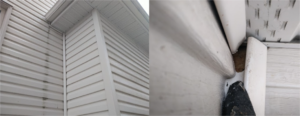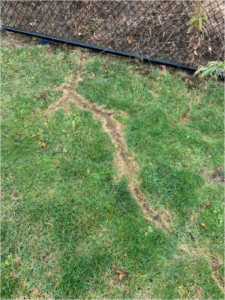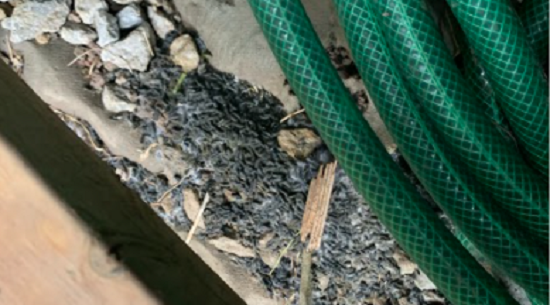Cartoon mice are cute and cuddly and regularly engage in shenanigans with hilarious results. Mice in real life, though, are nocturnal critters whose presence will give off a noxious odor and potentially spread disease.
Furthermore, mice can infest any home at any time. While winter is typically a period of lower activity for these rodents, that makes it even more important to take time to walk the exterior of your house in search of potential indicators. To learn more about the signs of infestation, make sure to read on.
Staining or Bite Marks Near Vents

During winter, mice prioritize finding protection from the cold, and sources of food. Vents that lead outside provide an escape for air but also provide an entrance for mice. As mice, like other furry creatures, often gnaw out of stress or for recreation. This means that gnaw or bite marks near your home’s exterior vents can be an indicator of a mice infestation.
However, these gnaw marks may not necessarily be a sign of an active infestation. Bite marks often leave stains behind. Lighter stains mean the gnaw marks are relatively new. Conversely, darker ones mean the biting happened a while ago.
Tunneling in Snow or Grass
 It may seem counterintuitive that rodents seeking heat do so by tunneling through the snow. However, packed snow can often serve as insulation and trap the warm air that emanates upward from the soil. When mice tunnel through the snow, they’re searching for these pockets of warmth so they can form something similar to an extremely rudimentary igloo.
It may seem counterintuitive that rodents seeking heat do so by tunneling through the snow. However, packed snow can often serve as insulation and trap the warm air that emanates upward from the soil. When mice tunnel through the snow, they’re searching for these pockets of warmth so they can form something similar to an extremely rudimentary igloo.
The snow also protects them from predators. Since it’s difficult for birds of prey or larger mammals, like foxes, to see what’s going on beneath the cover of the snow, mice can live without fear of being snatched and eaten.
Droppings Near Entry Holes
Mice are not shy when it comes to their droppings. They can leave nearly 50 to 80 droppings, around 3 to 8 mm in length, each night. If you spot a smattering of these dark pellets near your home’s exterior, especially if they’re concentrated around holes or other entry points to your home, your home likely contains unwelcome guests.
Recently left droppings will appear dark and moist. With age, they’ll become crumbly and gray. You’ll also find the highest concentration of droppings near areas of nesting or feeding. So, if you find a surprising amount of fresh pellets, you are likely dealing with an active infestation.
Other Signs of a Mouse Problem
Even if rodents aren’t inside your home, you should be able to spot signs that they are living near your home or in your yard. Mice can be crafty and use almost any untouched material to form a nest. Piles of leaves or ignored trash or waste make excellent homes for mice. If you’re unsure if that forgotten mess in your yard is actively protecting mice, check for the signs of infestation listed above.
Mice Removal
If you find the signs of mice around the exterior of your home, you’ll need humane wildlife services to safely rid your home or yard of the infestation. You shouldn’t touch or handle the rodents yourself, as they may contain disease and bite you if they feel frightened. Traps will not address the issue with any kind of efficiency, as they don’t address the root causes of the infestation – how are the mice getting in, and why.
Skedaddle Humane Wildlife Control is here to help. We’ll conduct a full assessment of your yard and property to better understand the extent of the infestation. We’ll use our humane techniques to remove the rodents and clean out any left behind mess. To best prevent rodents from coming back, we’ll also identify points of possible entry and secure them, too. Give us a call today to schedule an appointment.



